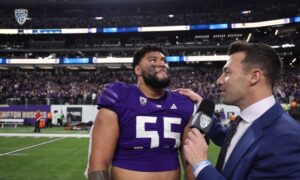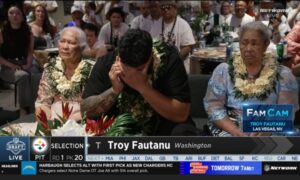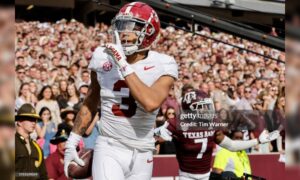College football recently underwent a seismic shift when it was allowed that players could financially profit from ‘NIL’—that is, their name, image, and likeness, which seems to be an expanding portfolio of possibilities with each passing year. Or has it?
Flash back a decade ago when former Pittsburgh Steelers second-round tackle Mike Adams was suspended for five games at Ohio State during his senior year for bartering some merchandise in exchange for some tattoo work.
While the floodgates have opened to allow players to financially profit off their name exactly in the manner that their own schools do, everybody in the scouting world is still trying to figure out just how this is going to affect the evaluation process with players increasingly making use of the transfer portal to seek more lucrative opportunities, as Pittsburgh wide receiver Jordan Addison is apparently intending to do.
Outgoing general manager Kevin Colbert recently spoke to Johnny McGonigal of the Pittsburgh Post-Gazette about NIL and the transfer portal and what kind of impact that can have on the pre-draft evaluation process moving forward.
“We’re all still trying to gather information and observe how NIL and the increased transfers are going to affect our evaluation process, if it has any effect at all. It’s in its infancy”, he quotes Colbert as saying, noting that there have always been transfers, but he anticipates that will increase.
“We all have to adjust to a comfort level along those lines”, he admitted. He talked about how they employ regional scouts who grow with players over time, and how the transfer portal could cause that evaluation process to be spread out over multiple scouts over the length of a player’s college career.
As McGonigal points out, the Steelers did draft two players last month who were transfers, namely both of their seventh-round draft picks, linebacker Mark Robinson and quarterback Chris Oladokun. In both cases, it would be fair to say that their ability to transfer and find another opportunity to play allowed them to become draftable.
Colbert had no hesitation in acknowledging the great benefit that NIL is to players, and certainly is in favor of it. But there is also the reality of the evaluation process, which will become more complicated with significant players moving around the country as they are lured away from their schools for more off-field opportunities.
On the flip side, it could also help to encourage such players to stay in college for that extra season (or even two) when they are able to profit, potentially handsomely, for their craft without making an early jump to the NFL.
That can be a boon for draft evaluators, especially when it comes to quarterbacks who don’t have a lot of tape. As Colbert said, it has to be taken every time on a case-by-case basis. Why did the player transfer, and how did it affect him? For now, it’s a very small minority of players, but that could expand in the years to come.








